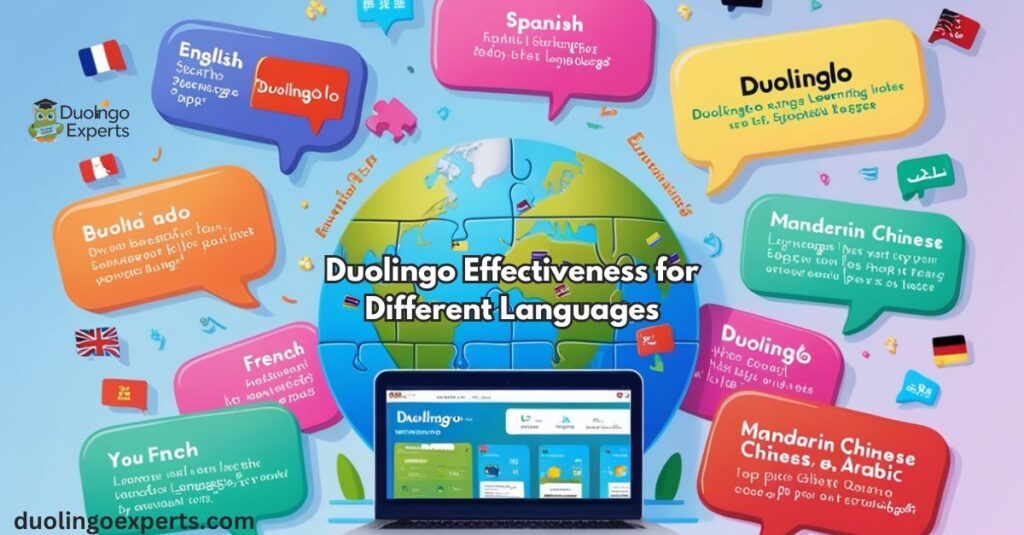Duolingo has become one of the most popular language-learning apps worldwide, attracting millions of users with its fun, engaging, and convenient platform. But does Duolingo actually work?
In this blog post, we’ll dive into the science behind Duolingo learning methods, assess its effectiveness based on research, and explore whether it can help you become fluent in a new language. We’ll cover its core features, effectiveness for different language skills, and real user success stories, all backed by data and evidence.
The Science Behind Duolingo Learning Method
Duolingo’s approach to language learning is grounded in well-established educational principles. At the heart of its method lies NLP (Natural Language Processing) and AI-powered language learning, which adapt content based on user performance. The platform uses spaced repetition a memory technique that helps learners retain new vocabulary and grammar by reviewing words and phrases at progressively longer intervals.
Research shows that spaced repetition can significantly improve retention, making Duolingo a highly effective tool for reinforcing language concepts. The app’s AI algorithms continuously adjust to a learner’s progress, ensuring the right balance of challenge and reinforcement.
Gamification in Language Learning
Duolingo’s use of gamification is a core element of its appeal. By incorporating game-like elements such as points, levels, badges, and rewards, Duolingo keeps learners engaged and motivated. The Daily Streak System, for example, encourages users to practice daily by rewarding them with streaks that track consecutive days of learning.
This element of gamification taps into the psychology of habit formation and provides immediate gratification, which helps sustain motivation.
While the Daily Streak System can lead to consistent practice, it also creates pressure, which may lead to burnout for some users. Finding a balance between motivation and stress is crucial for long-term success with Duolingo.
Duolingo Core Features: Making Language Learning Accessible

Duolingo has a variety of features designed to make language learning fun, intuitive, and effective. Below are some of the most important elements of the platform:
- Skill Tree Structure: Duolingo organizes lessons in a hierarchical skill tree, which guides learners through progressively more difficult content. This structured approach mirrors the gradual progression you would find in traditional classroom learning but with the added benefit of flexibility.
- Interactive Exercises: Duolingo offers a diverse range of exercises, from translation tasks to speech recognition quizzes, designed to test and reinforce different language skills. These interactive elements enhance multimodal learning, engaging both visual and auditory learners.
- Personalized Learning: With its AI-powered learning system, Duolingo personalizes lessons based on a user’s progress. The app adjusts difficulty levels and offers targeted practice based on individual performance, creating a more customized experience than traditional methods.
- Error Detection and Correction: Duolingo’s automated feedback system provides instant corrections when users make mistakes in grammar, pronunciation, or vocabulary. This real-time feedback is essential for improving language skills efficiently.
Spaced Repetition: The Key to Long-Term Retention
One of the primary reasons Duolingo is effective is its use of spaced repetition. This technique is based on the idea that learners should revisit material at increasing intervals to optimize memory retention. Duolingo uses this system to reinforce vocabulary and grammar points over time, preventing forgetting and ensuring long-term retention.
Benefits of Spaced Repetition
- Improved Retention: Studies have shown that spaced repetition helps learners retain information for longer periods compared to traditional cramming techniques.
- Customization: The app tailors review sessions to the learner’s needs, focusing on words or concepts they struggle with the most.
- Efficiency: By reviewing material at optimal intervals, Duolingo helps learners focus on what matters most, minimizing wasted time.
Does Duolingo Actually Work? Research-Based Evidence
Duolingo’s effectiveness has been a subject of study in several academic and independent research papers. According to a 2012 study published in Language Learning & Technology, Duolingo learners showed significant improvements in vocabulary acquisition after just a few weeks of consistent use.
Another study conducted by the University of California, Berkeley, found that Duolingo was effective at improving language skills, with users progressing at a pace comparable to traditional university language courses.
While Duolingo has its strengths, researchers note that it is particularly strong in building vocabulary and basic grammar but lacks the depth needed for advanced fluency or conversational practice.
Duolingo Effectiveness for Different Language Skills
Duolingo is designed to help users develop proficiency across four key language skills: reading, writing, speaking, and listening. However, its effectiveness varies depending on the skill being practiced.
Reading and Writing Proficiency
Duolingo is highly effective for building reading and writing skills. The app offers translation tasks, grammar drills, and writing exercises, which help reinforce vocabulary and sentence structure. These activities are suitable for learners at the A2 level (basic proficiency), making Duolingo a solid tool for beginners and intermediate learners.
Speaking and Listening Development
While Duolingo offers speech recognition exercises to help improve speaking and listening, the system has limitations. The speech recognition technology isn’t perfect and can struggle with accents or non-native pronunciations.
However, for learners without access to native speakers, Duolingo offers a good starting point for practicing basic speaking and listening skills.
Grammar and Vocabulary Building
Duolingo is excellent for building vocabulary through repetition and active recall. The app presents new words in various contexts, helping learners internalize their meanings. However, its grammar drills are less comprehensive than those found in traditional courses, as Duolingo focuses on intuitive learning rather than explicit grammar instruction.
Duolingo Success Stories: Real Users Share Their Experiences
Many users report significant progress with Duolingo, especially for building vocabulary and reaching basic conversational skills. Success stories highlight learners who have achieved proficiency in languages like Spanish, French, and even more complex languages like Japanese and Korean.

For example, one Duolingo user mentioned that they used the app to go from zero Spanish knowledge to conversational fluency in just six months, relying on Duolingo as their primary learning tool alongside immersion in Spanish-speaking communities.
While Duolingo can help learners reach A2 or B1 level proficiency in a new language, most users agree that advanced fluency requires additional practice with real-world conversation, grammar study, and immersion.
Comparing Duolingo to Traditional Language Classes
How does Duolingo measure up against traditional classroom learning? While Duolingo offers flexibility and convenience, it doesn’t provide the same level of depth as formal language courses.
Pros of Duolingo:
- Flexibility: Learn at your own pace, anytime, anywhere.
- Cost-Effective: Free, with optional in-app purchases.
- Motivation: Gamification keeps learners engaged.
Cons of Duolingo:
- Lack of Conversation Practice: Limited speaking and listening practice, which is crucial for conversational fluency.
- Limited Grammar Instruction: Duolingo focuses more on vocabulary and sentence structure than on in-depth grammar lessons.
- Not Suitable for Advanced Learners: For advanced proficiency, Duolingo requires supplementary resources.
Duolingo Effectiveness for Different Languages

Does Duolingo Actually Work for Spanish?
Duolingo is highly effective for learning Spanish, especially for beginners. With a well-structured course that covers vocabulary, grammar, and pronunciation, Duolingo is one of the best apps for Spanish learners.
Does Duolingo Actually Work for French?
French learners also benefit from Duolingo’s gamified approach. The app introduces French grammar, vocabulary, and listening comprehension exercises in a way that’s engaging for learners at all levels.
Does Duolingo Actually Work for Japanese?
While Duolingo can help you learn basic Japanese vocabulary and grammar, mastering Japanese kanji (characters) and advanced conversation skills requires additional practice outside the app.
Does Duolingo Actually Work for Korean?
Korean learners can use Duolingo for foundational language skills, but more practice is needed for fluency, especially in understanding the unique Korean writing system and complex sentence structures.
Fluency and Proficiency with Duolingo: Can You Reach It?
Duolingo is an excellent starting point for building language proficiency, particularly for beginners and intermediate learners. However, becoming truly fluent requires practice beyond the app. The app helps develop conversational fluency and basic comprehension, but to become fluent, learners need more real-world practice, cultural exposure, and advanced grammar study.
Does Duolingo Work Offline?
One of the benefits of Duolingo is that it works offline, allowing users to continue their language learning when they don’t have access to the internet. This makes it convenient for learners who want to practice during commutes or in places with limited connectivity.
Frequently Asked Questions About Does Duolingo actually work
Can you actually become fluent with Duolingo?
Yes, Duolingo can help you build a strong foundation in a new language, but becoming truly fluent requires consistent practice and exposure beyond the app. It’s great for vocabulary and grammar, but conversational fluency might require additional speaking practice.
Is Duolingo really effective?
Yes, Duolingo is effective for building basic language skills and reinforcing vocabulary through spaced repetition. However, to achieve higher-level fluency, it’s best used alongside other immersive methods like conversation practice.
Has Duolingo actually helped anyone?
Yes, many users have shared success stories of improving their language skills with Duolingo, especially for beginner to intermediate levels. However, for advanced fluency, additional resources like conversation practice are often needed.
Why are people leaving Duolingo?
Some people leave Duolingo due to its repetitive nature and the lack of real-life conversation practice. Others find it insufficient for achieving advanced fluency without supplementary learning methods.
Is Babbel better than Duolingo?
Babbel offers more in-depth grammar explanations and structured lessons, making it better for learners aiming for higher proficiency. However, Duolingo is more engaging and offers a free, gamified approach that suits casual learners.
Is Rosetta Stone better than Duolingo?
Rosetta Stone focuses on immersion and visual learning, which can be more effective for pronunciation and context-based understanding. However, Duolingo offers a more interactive, gamified experience that many find easier to stick with.
Which language app is best for fluency?
For fluency, apps like HelloTalk or italki are ideal as they focus on real-world conversational practice with native speakers. While Duolingo is great for building a foundation, it lacks the immersive speaking experience needed for true fluency.
What is the easiest language to learn?
The easiest language to learn depends on your native language, but for English speakers, Spanish and French are often considered the easiest due to similar vocabulary and grammar structures. Norwegian is also frequently cited for its straightforward rules and pronunciation.
How many hours of Duolingo to be fluent?
Becoming fluent with Duolingo depends on your dedication and language goals, but most learners need several hundred hours of practice. On average, 1,000-2,000 hours of focused study can help achieve a high level of fluency.
Can you learn a language while sleeping?
While some studies suggest passive learning during sleep can reinforce vocabulary, you can’t learn a language entirely while sleeping. Active practice and engagement are crucial for mastering grammar, speaking, and listening skills.
Conclusion: Is Duolingo Actually Effective?
Duolingo works, but its effectiveness depends on your language-learning goals. For beginners and those seeking to build a solid foundation in vocabulary and basic grammar, Duolingo is highly effective. Its use of gamification, spaced repetition, and personalized learning helps keep learners engaged and motivated.
However, for advanced learners aiming for conversational fluency and in-depth grammatical knowledge, Duolingo should be supplemented with other resources such as immersion, formal courses, and real-world speaking practice.
In short, Duolingo is a fantastic tool for getting started with a new language, but to achieve full fluency, learners must combine it with additional methods for conversation practice, cultural immersion, and grammar study.

DuolingoExperts, managed by MarkJohan, offers expert insights and tips for mastering languages. A tech-driven platform to enhance your learning experience.

